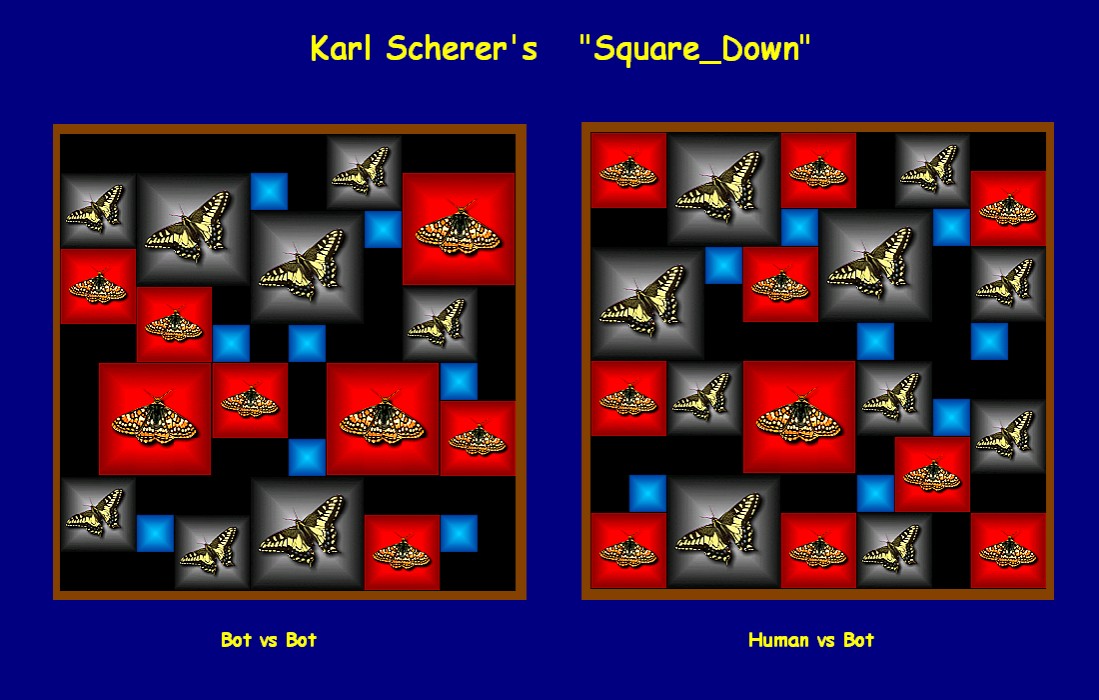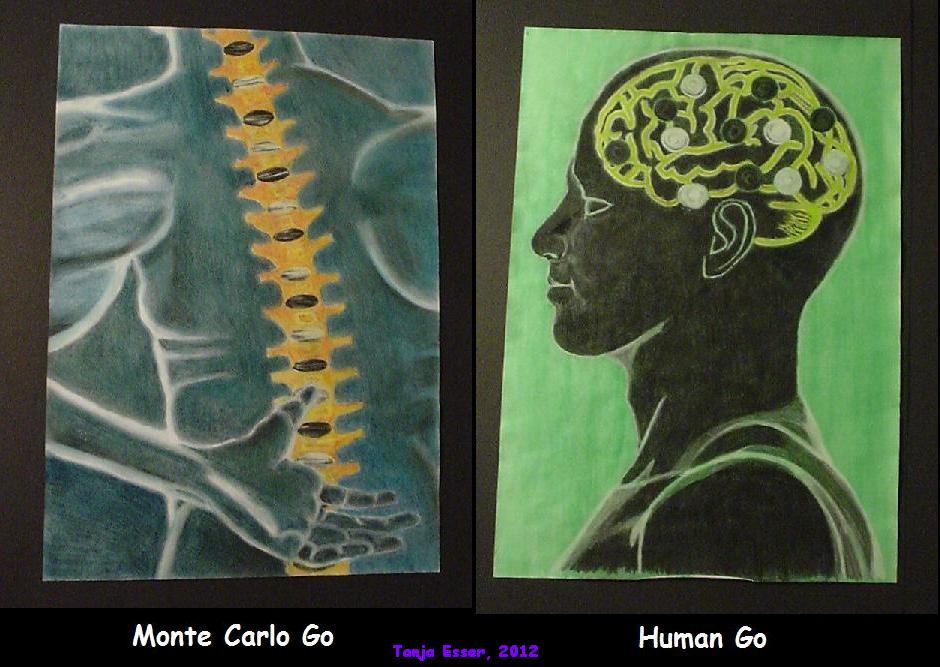
Square_Down
The "Zillions-of-Games" program for this game by Karl Scherer is way too strong for me.
Think of your pet game. A computer program for this game does not automatically mean a big step towards happiness. Often, the bot is much too strong - so you will lose against it all the time. Or, the bot may be far too weak to be an appropriate playing partner.
In such a situation (I have several pet games ...), at one moment back in 2002
I started not to play for a win any longer, but for beauty. Two different
cases.
Either: When I am clearly ahead, I still want to win,
but I also try to achieve a nice final position.
Or: When my situation in a game is hopeless, it becomes my only
goal to reach a nice final position, regardless if this will
make the loss even more dramatic.
Of course, here "beautiful" and "nice" are subjectively "defined" by
my own preferences and feelings - which may change from day to day, or
even from moment to moment ...
In the first part of this exhibition you find screenshots on some nice board filling games, for which I own computer programs. The second part shows shows pictures of nice (final) positions for normal (i.e. "hands on") games. The textlines below some of the pictures can be clicked to get more explanations.

Square_Down
The "Zillions-of-Games" program for this game by Karl Scherer is way too strong for me.

Py
In all symmetric settings this program is so weak that I win
almost without any thinking.


Documenta
Within "Zillions-of Games 1", Documenta is played really poorly by the bot.
For me it was a very easy exercise to win against it and to
generate nice end positions on the board.
In contrast, the newer version Zillions-2 is an opponent at eye-level.
Starting in 2007, bots based on Monte Carlo evaluations
dominate the compute go scene. One of their astonishing properties
- besides the impressive playing strength (some of them have reached
dan-level strength on standard hardware) - is the willingness
to be happy with a win by 0.5 points, even if they had a
trememdous advantage during the game.
This is an ideal starting point for "Picture Go":
Allow the bot to gain a clear lead, and as compensation,
get the freedom to "design" a pixel picture of your choice on the board.



Leela too,
especially on the monstrous 37x37-board. Tenuki works differently!

For the European Go Congress 2012, Tanja Esser had designed two
wonderful ink paintings. I was so lucky to acquire them. Thanks to Mrs.
Esser for allowing me to show the pictures online!
The subtitles are mine. The go stones in the vertebral column
are symbolising the "instinctive" or
"reflex-like" character of Monte Carlo algorithms. In contrast,
in human go the stones have their places in the brain.







Back to the main site of Ingo Althöfer